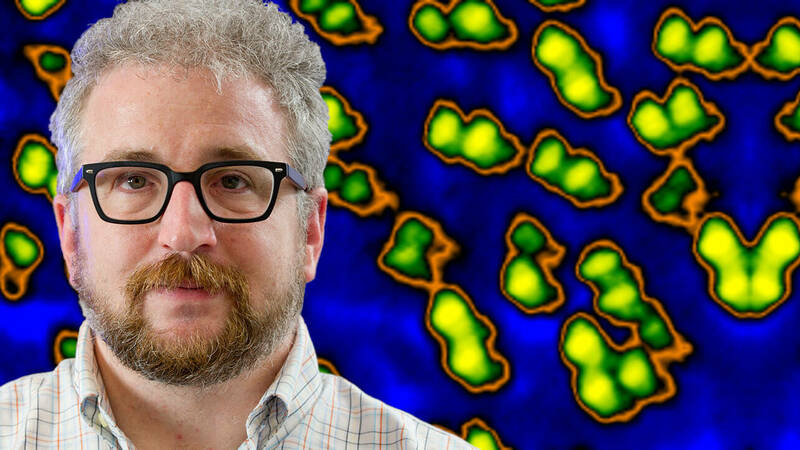
S. Alex Kandel
Professor
- Office
- 106 Stepan Chemistry
Notre Dame, IN 46556 - Phone
- +1 574-631-7837
- skandel@nd.edu
Research Areas
- Physical/Analytical Chemistry
Research Specialties
- Materials
- Measurement
Prospective Graduate Students
Biography
| Year | Title |
|---|---|
| 2021-present | Professor, University of Notre Dame |
| 2007-2021 | Associate Professor, University of Notre Dame |
| 2001-2007 | Assistant Professor, University of Notre Dame |
| 1999-2001 | Postdoctoral Fellow, Pennsylvania State University |
| 1999 | Ph.D. in Chemistry, Stanford University |
| 1993 | B.S. in Chemistry, Yale University |
Selected Awards
2015 Joyce Award for Excellence in Undergraduate Teaching
2003 CAREER Award, National Science Foundation
2000 Union Carbide Student Innovation Recognition Program
2000 American Chemical Society Nobel Laureate Signature Award in Graduate Education
Research Interests
Research in the Kandel group centers around Scanning Tunneling Microscopy (STM). STM allows for imaging with sub-Ångstrom resolution, resulting in direct measurements of the individual atoms and molecules that make up the surfaces of materials. We use molecular-resolution imaging to investigate three broad areas of research: Gas-surface interactions and chemical reactions We produce "movies" from timed sequences of STM images that show the molecular-scale changes that occur on surfaces as they are exposed to high-kinetic-energy neutral or free-radical gas atoms. Such reactions are particularly important for surfaces exposed to active environments, such as flames, plasmas, and the upper atmosphere. Formation and structure of molecularly heterogeneous surfaces Surfaces exposed to molecules in vapor or solution can exhibit both order and randomness on the micrometer and nanometer scales. By choosing appropriate systems, we can vary molecule-molecule and molecule-surface interactions and control molecular placement and ordering on the surface. Characterization of electronically active surface-bound molecules An STM tip and a conducting surface can be used as electrodes for probing the electronic properties of individual molecules. We work with organometallic molecules with multiple metal centers, and study how local environment affects intramolecular distribution of charge, with possible applications in memory and logic circuits. Images and additional information can be found in the Kandel Group Image Gallery
Selected Publications
- Heiner, B. R.; Pittsford, A. M. and Kandel, S. A. "Self-Assembly Controlled at the Level of Individual Functional Groups" 2022 Chemical Communications, 59 (2), pp.170-178. DOI: 10.1039/d2cc04537k.
- Schalk, C. N.; Turner, D. A.; Gans-Forrest, A. R.; Jobbins, M. M. and Kandel, S. A. "Simple, low degree-of-freedom load-lock and in-vacuum sample transfer" 2020 Journal of Vacuum Science and Technology B: Nanotechnology and Microelectronics, 38 (5), 054201. DOI:10.1116/6.0000495.
- Silski-Devlin, A. M.; Petersen, J. P.; Liu, J.; Corcelli, S. A. and Kandel, S. A. "Methylisatin Structural Isomers Have Different Kinetic Pathways to Self-Assembly" 2020 Journal of Physical Chemistry C, 124 (32), pp. 17717-17725. DOI:10.1021/acs.jpcc.0c05456.
- Silski-Devlin, A. M.; Petersen, J. P.; Liu, J.; Turner, G. A.; Poutsma, J. C. and Kandel, S. A. "Hydrogen-Bonded Tetramers of Carbamazepine" 2020 Journal of Physical Chemistry C, 124 (9), pp. 5213-5219. DOI:10.1021/acs.jpcc.9b11466.
- Turner, D. A.; Schalk, C. N. and Kandel, S. A. "Atomic Hydrogen Reactions of Alkanethiols on Au(111): Phase Transitions at Elevated Temperatures" 2020 Journal of Physical Chemistry C, 124 (13), pp. 7139-7143. DOI:10.1021/acs.jpcc.9b10914.
- Petersen, J. P.; Brown, R. D.; Silski, A. M.; Corcelli, S. A. and Kandel, S. A. "Complex Structures Resulting from Carboxylic Acid Self-Assembly: Comparison of 2-Naphthoic Acid to Quinaldic Acid and 3-Quinoline Carboxylic Acid" 2019 Journal of Physical Chemistry C, 123 (22), pp. 13610-13614. DOI:10.1021/acs.jpcc.9b01817.